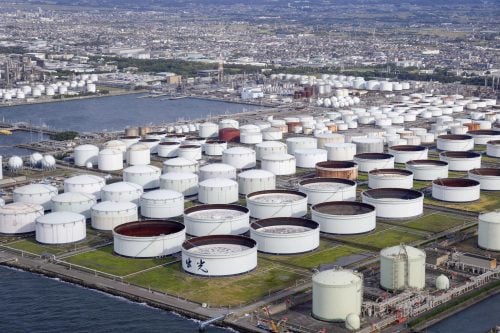Crude oil prices deepened their losses to more than 4%, at the end of trading today, Wednesday, May 3 (2023), to continue bleeding losses for the third consecutive session.
This comes amid investor concerns about a global economic recession, after the Federal Reserve raised interest rates by a quarter of a percentage point.
Crude oil prices closed the previous session at their lowest since March 24 in the previous session, when they also posted the biggest one-day percentage drop since early January.
Crude oil prices today
At the end of the session, futures contracts for Brent crude, for delivery in July 2023, fell by 4%, to record $ 72.33 a barrel.
US West Texas Intermediate crude futures, for June 2023 delivery, also fell, by 4.3%, to record $68.60 a barrel, the lowest level since March 2023, according to data seen by the specialized energy platform.
Crude oil prices ended their trading yesterday, Tuesday, May 2, with a decrease of more than 5%, in light of expectations of an increase in US interest rates, and weak economic data from China.
Oil price analysis
“Sentiment in the oil market remains negative…investors appear to be becoming increasingly concerned about the macro outlook and its implications for oil demand,” ING analysts Warren Patterson and Ewa Manthey said in a note to clients.
The US Federal Reserve raised interest rates by an additional 25 basis points on Wednesday to combat inflation, while the European Central Bank is also expected to raise interest rates at its regular meeting on Thursday.

Further increases may slow economic growth and harm energy demand, according to information monitored by the specialized energy platform.
“The 25 basis point rate hike has been fully priced in, so the focus will be on how to strike a balance between keeping the Fed’s options for rate hikes open and calming nerves around renewed banking tensions,” says market analyst at brokerage IG, Yip Jun Rong. Reuters.
Regulators took over First Republic Bank and sold its assets to JPMorgan on Monday, in a deal to resolve the failure of the largest US bank since the 2008 financial crisis and create solutions in a banking system in turmoil.
In Australia, the central bank surprised the markets by raising its cash rate on Tuesday, and warned that further tightening may be necessary to combat soaring inflation.
Meanwhile, concerns about diesel demand in recent months have pushed US heating oil futures to their lowest level since December 2021.
Energy prices are also under pressure, after data from China over the weekend showed manufacturing activity fell unexpectedly in April. China is the world’s largest energy consumer and largest buyer of crude oil.
China’s economic reopening will be pivotal to Asia, the International Monetary Fund said, as it raised its economic outlook for the region on Tuesday, but warned of persistent inflation risks and global market volatility driven by problems in the Western banking sector.
US oil stocks
Meanwhile, US oil inventories fell for the third consecutive week by about 1.3 million barrels last week, while gasoline stocks rose by 1.7 million barrels, according to the US Energy Information Administration.
A Reuters survey found that OPEC oil production fell by 190,000 barrels per day in April, mainly driven by declines in Iraq and Nigeria.
Production is set to fall further in May, with the start of a new round of voluntary cuts revealed on April 2.
related topics..
Also read..

Leave a Reply